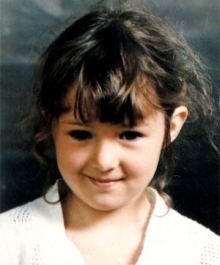Name Teresa Cormack | ||
 | ||
Full Name Teresa Maida Cormack Died June 19, 1987, Napier, New Zealand Similar Nia Glassie abuse case, Autopsy images of Ngatikaura Ngati, Murder of Sian Kingi | ||
Teresa Maida Cormack (18 June 1981 – 19 June 1987) was a six-year-old New Zealand murder victim from Napier, New Zealand. After fifteen years, advances in genetic analysis led to conviction of Jules Mikus (born September 28, 1958) for the crime. He had been identified as a potential suspect early in the investigation, but had offered an alibi that was accepted at the time.
Contents
- A Promise Kept Inside Operation Cormack 1 of 5
- Murder and death
- Investigation
- Breakthrough
- Aftermath
- References
A Promise Kept: Inside Operation Cormack (1 of 5)
Murder and death

Teresa lived in Napier, New Zealand, with her mother, Kelly Piggot, and her younger sister Sara. Although reluctant to go to school on the day after her birthday, Cormack departed home on her normal walking route to Richmond Primary School, which was a short distance from where she lived. However, she did not go to school and instead wandered the streets in the suburb of Maraenui for around an hour.
Eight days later, Cormack's body was discovered at the base of a tree on Whirinaki Beach by a woman walking her dog. An autopsy revealed that she had been raped and suffocated.
Investigation
Three male pubic hairs were found orally and in her underwear, and semen was found vaginally on Cormack's body. However, genetic fingerprinting at the time was not advanced enough to find her killer.
Jules Mikus (born September 28, 1958), who committed many sex crimes as a teenager, was questioned by police and provided samples of his saliva and blood. Mikus provided an alibi for the time the abduction was believed to have occurred. Afterwards, he was excluded as a suspect.
Breakthrough
The Cormack murder case was re-opened in 1998 and new testing was done at a crime lab in the United States. Due to advances in genetic fingerprinting, a minute sample of semen stored sealed between two microscope slides was able to be profiled in 2001 by technicians at ESR (Environmental Science & Research, a Crown Research Institute owned wholly by the New Zealand government).
Despite having this profile, an arrest was not immediate. A public television broadcast by the detective in charge and seen by Mikus provoked a reaction in front of the people with whom he lived but they did not contact police. Eight-hundred and forty-five blood samples had been taken, of these, four were of insufficient quality to make a profile. After nearly a year of testing the blood (taking until February 22, 2002), only one blood profile matched the semen and it came from Mikus.
Fifteen years following Cormack's demise, on February 26, 2002, authorities apprehended Mikus in connection with the murder. Despite Mikus's plea of not guilty, a jury convicted him of kidnapping, rape, sexual assault, and murder. He received a life sentence for the murder charge, was placed under preventative detention for rape, and was sentenced to 14 years for both sexual assault and abduction. These sentences were to be served concurrently, with a stipulated minimum non-parole period of 10 years.
Aftermath
The case attracted widespread interest in New Zealand.
In 2004, Rowene Marsh-Potaka (who had campaigned to stop her brother from being paroled for murder) collaborated with Cormack's mother Kelly Piggot to write an anti-parole song. They wanted the song to let people know that offenders such as Mikus should serve their full sentences. Piggot also has a daughter named Hannah.
Paul Rothwell's play Golden Boys, which ran at Circa Theatre in early 2006, was inspired by the Cormack case.
